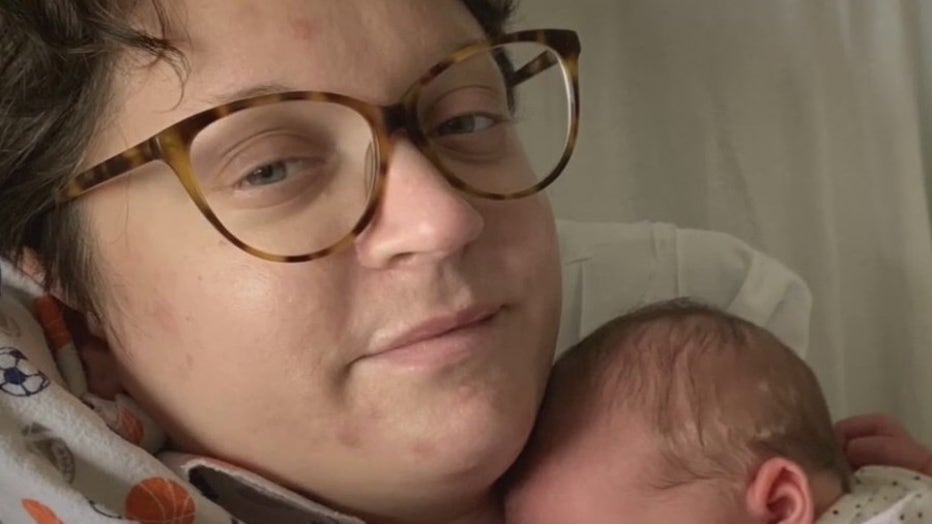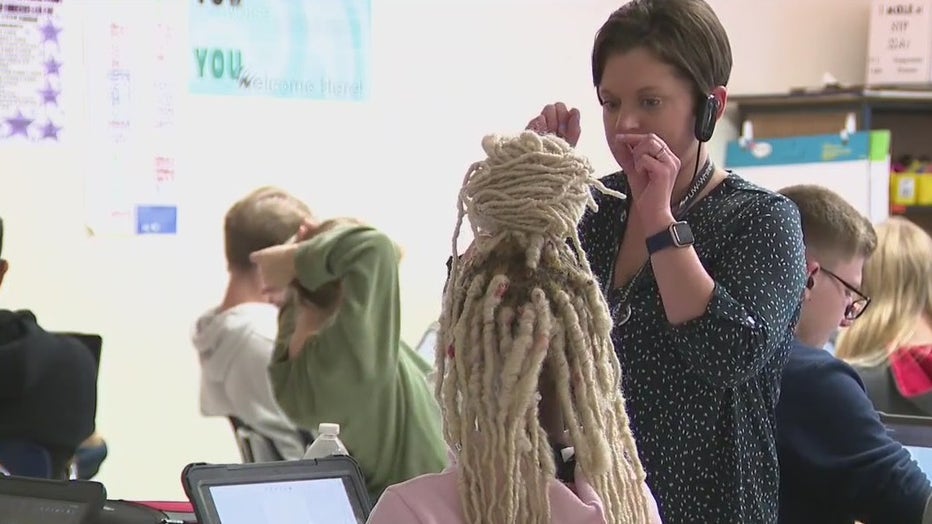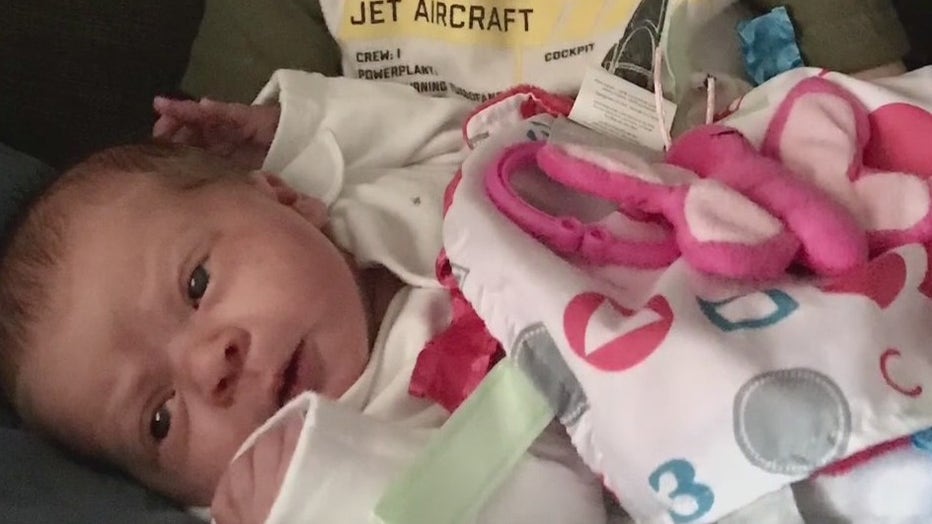Waukesha teacher had aneurysm burst after giving birth to daughter

Waukesha teacher had aneurysm burst after giving birth to daughter
Inside Waukesha North High School, physics and chemistry teacher Kirsten Wiesneski has her lesson plan down to a science. She talks a lot about variables, but nothing could have prepared her for what happened right before summer vacation.
WAUKESHA, Wis. - Inside Waukesha North High School, physics and chemistry teacher Kirsten Wiesneski has her lesson plan down to a science. She talks a lot about variables, but nothing could have prepared her for what happened right before summer vacation.
"It was a shock. (It took us) completely out of nowhere," said Wiesneski.
Wiesneski had just given birth to her second child, and as she sat in her hospital bed, everything seemed fine.
"Nothing out of the ordinary," said Wiesneski. "Feeding and snuggling with the baby."

Kirsten Wiesneski
In fact, she was FaceTiming with her mom just hours after the delivery when, "all of a sudden it felt like someone took an axe to my head. The next thing I know, I was unable to like, make a sentence. In my head, I knew what I needed to do. I knew I needed to put the baby down, but I could not tell my body to physically do that. I could not move my body."
Doctors rushed her to get a brain scan.
The doctors told her something unexpected: "Lo and behold, I had an aneurysm that burst."
SIGN UP TODAY: Get daily headlines, breaking news emails from FOX6 News
"They think this was something I was born with," said Wiesneski. "They don’t know if it was the stress from the pregnancy or delivery that it burst."
By the next morning, her pain had subsided, but no amount of medicine could prepare her for the emotional pressure of emergency brain surgery – if she chose to go ahead with it.

"My understanding is it would have kept on bleeding, and I was choosing death," Wiesneski said. "It was the scariest moment of my life when I had to sign my life away to the surgeon."
That surgeon, Dr. John Nerva from Froedtert and the Medical College of Wisconsin, used a procedure called "coiling."
"This is where the coils are, and that’s where they’re sitting," Dr. Nerva said. "So there’s 10 coils in there. Depending on the size and shape of the aneurysm, sometimes you can use one. Sometimes you need many, many coils to repair."
Dr. Nerva says those coils are deployed into the aneurysm to prevent blood from entering, so it does not burst again. The coil goes into the aneurysm through the groin and forms a wall. It kind of feels like dental floss.
Dr. Nerva says 1% to 2% of the population actually "has" an aneurysm.
"They just never show any signs or symptoms," said Dr. Nerva.
Doctors are not sure exactly what causes an aneurysm to burst, but if they do, there is a 50% chance of survival.
Wiesneski knows she was fortunate.
"I lucked out in all categories," said Wiesneski.

She has since returned to teaching full time, enjoying the students in her classroom and preparing them for the future, knowing things don’t always go as planned. She continues to get a check-up every few months but says she’s not limited to living a normal, quality life.
At home, she savors every moment with her husband, Michael, 4-year-old Mac and baby Tierney.

"When I’m snuggling our 4-month-old, it’s when it hits the most, a lot of the times, just because it is like, I call her my big, brave girl because we were separated for those two weeks, the first two weeks of life where I was not able to hold her and cuddle her," said Wiesneski. "She still comes up to me like I’m her momma."

